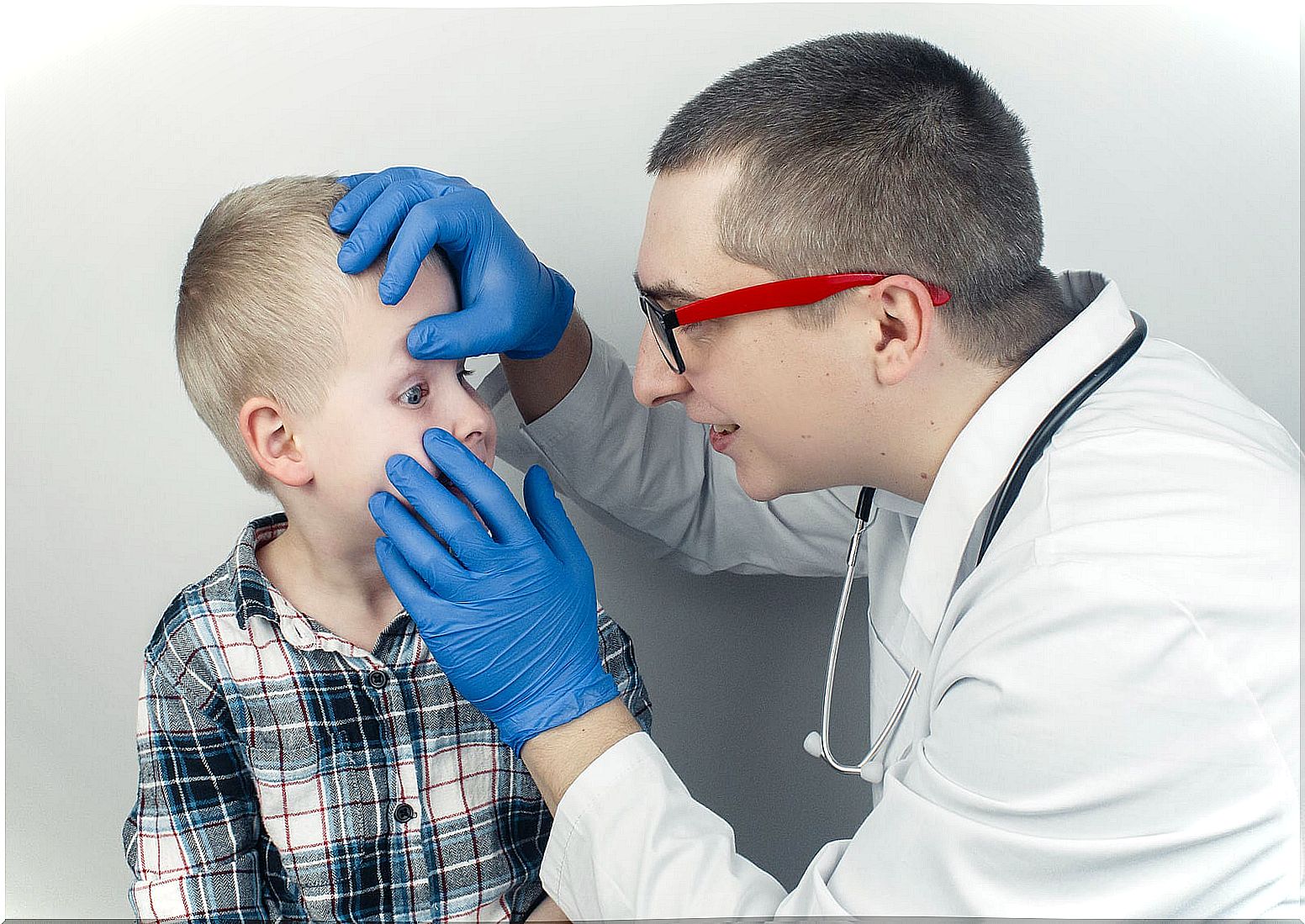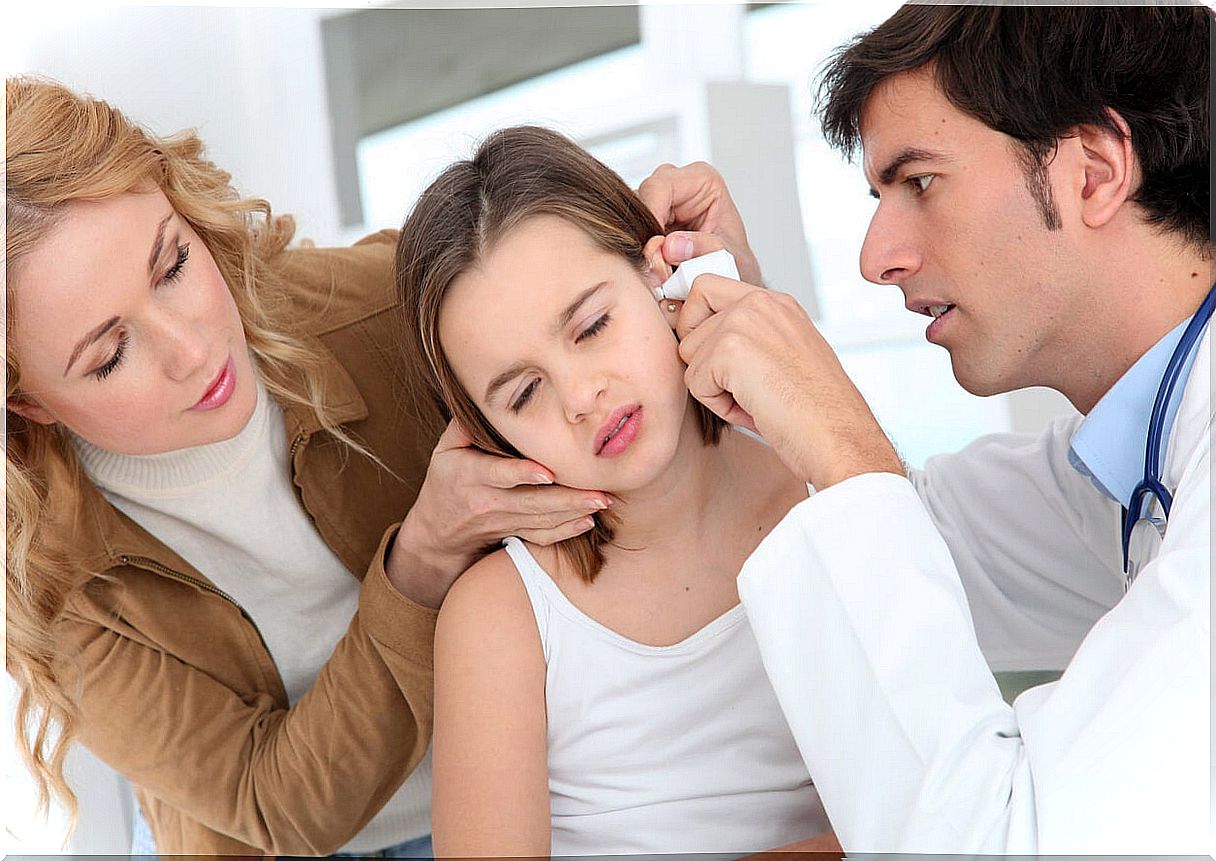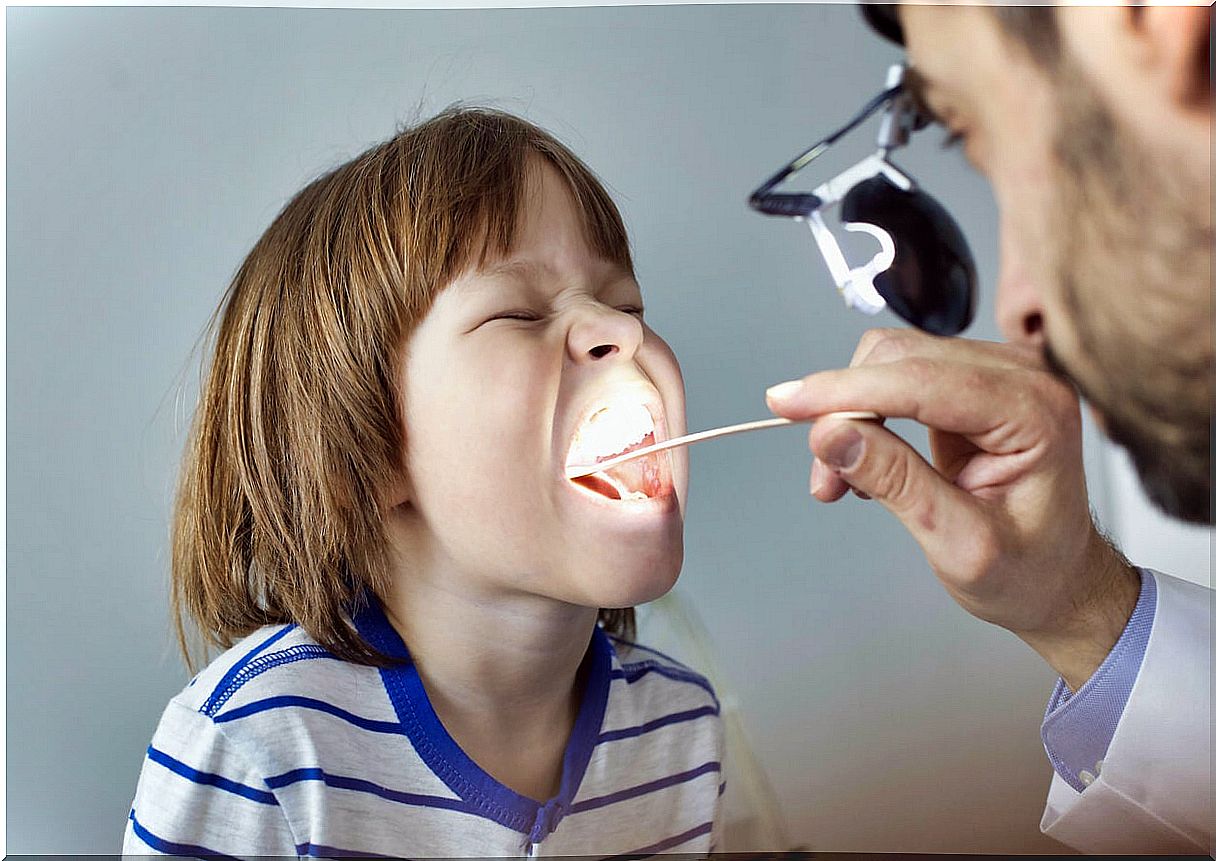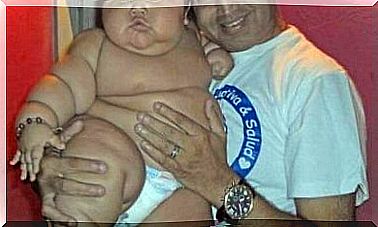5 Common Childhood Illnesses Caused By Bacteria

Due to the poor development of the immune system of children, diseases caused by bacteria are very common in the first years of life. Although in most cases they are mild, one must be vigilant to avoid the development of complications that, although unlikely, can happen.
5 common illnesses caused by bacteria that children can get
Here are some fairly common conditions, so you may well have heard of them. The aspects of treatment are very particular in each case, but share the fact that the use of antibiotics is usually indicated.
1. Otitis

Otitis is the inflammation of some of the ear segments. Classically, three parts of this organ are described: the outer, middle and inner ear. The first two clinical forms are very common, while infectious diseases in the inner ear are rare and are associated with other symptoms.
This condition is usually caused by infection by bacteria such as Staphylococcus aureus and Pseudomonas aeruginosa . Depending on several factors, the infection can go from simple redness and constant itching of the external ear canal (otitis externa) to severe pain with release of pus and rupture of the eardrum (otitis media).
2. Whooping cough, one of the diseases caused by bacteria
Bordetella pertussis is the bacteria responsible for whooping cough. It is a highly contagious respiratory infection that, from a clinical point of view, stands out a lot for the appearance of coughing in fits that makes breathing very difficult during the time it lasts. In fact, the cough is so strong that it can be accompanied by vomiting or small bleeding.
In many cases, it is not possible to determine the infection by B. pertussis . It is at this time that doctors use the term coqueluchoid syndrome , a disorder that expresses the same symptoms as whooping cough, but can be caused by other bacteria or other agents, such as adenovirus.
It is a vaccine-preventable disease, so its incidence and prevalence has decreased greatly in recent decades. However, it is still endemic in many countries, especially those that are developing.
3. Meningitis
Meningitis is one of the most feared conditions on the list, since without proper treatment it can lead to severe complications. It is not a disease exclusively caused by bacteria, and some of the agents most implicated are Streptococcus pneumoniae and Neisseria meningitidis .
Thanks to vaccination strategies, the incidence of meningitis and its complications has decreased over time. However, it remains an important cause of morbidity and mortality in children.
Symptoms are highly dependent on the age of the patient and are often easier to diagnose as the child grows older. In schoolchildren and adolescents, the presence of a stiff neck, vomiting, high fever and abnormal movements can guide a lot towards the diagnosis of meningitis.
4. Conjunctivitis
Conjunctivitis is a very common condition in both children and adults. It is not always infectious and, when it is, a good portion of cases are due to viral infections. Bacterial conjunctivitis can be a bit more difficult to treat, requiring antibiotics in some cases.
Symptoms include local redness, itching, excessive tear production and, in some cases, the emission of pus. As it is a communicable condition, it is advisable to follow personal and family hygiene measures to avoid contagion.
5. Anginas

The term angina is often used in children to refer to some types of infection that are characterized by inflammation of the tonsils. Most clinical forms are mild, characterized by a sore throat, malaise, bad breath, fever, and swollen glands in the neck.
It is important to differentiate it from other diseases such as angina pectoris or Vincent’s angina . The first refers to the symptoms of a disease that affects the blood supply to the heart, which in simple terms could refer to a heart attack, although it is not the same.
Vincent’s angina is a widespread infection involving the gums and organs mentioned above, but without treatment it can make swallowing food very difficult and compromise the patient’s airway. Of course, these last two conditions are more common in adults.
Infections caused by bacteria are very varied
These diseases are unpredictable. The vast majority only represent a discomfort that can cause your child to spend a few days in bed, while others can be complicated and generate the need for various care.
The most important thing is to keep an eye out for any additional symptoms that arise, fever being one of the most common in infectious diseases. Going to the pediatrician as soon as possible is the best option to make sure that everything goes well.









